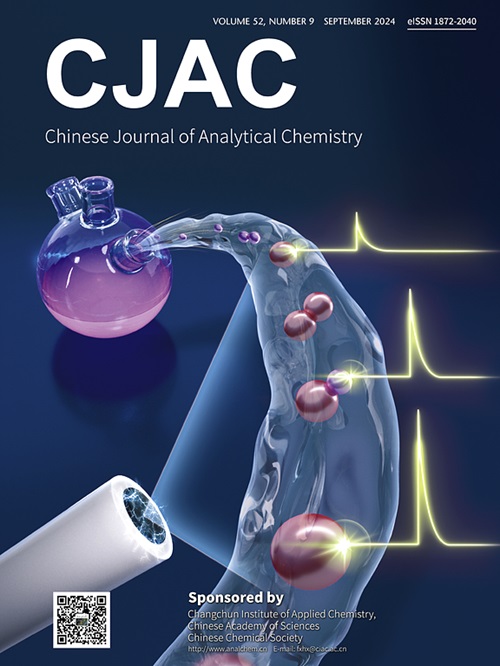The interaction of enzymes with environmental factors and their effect on function
IF 1.3
4区 化学
Q4 CHEMISTRY, ANALYTICAL
引用次数: 0
Abstract
In eukaryotic cells, a large number of proteins are transported to the 26S proteasome after modification with ubiquitin by special substrate receptors. The AAA-ATPase CDC48, its cofactors and other ubiquitin-binding factors appear to be involved in this process. However, the exact function of CDC48 and the interaction of the factors in degradation processes are not yet sufficiently understood. In this work, it was shown for the first time that the factors of substrate recruitment, multiubiquitylation and substrate transfer to the proteasome physically interact and form a network that specifically directs substrates to the proteasome. CDC48 plays a central role in this degradation pathway, as it works with the help of the cofactors UFD1/NPL4 in the recognition and transfer of the substrate to the E4 enzyme UFD2. Furthermore, CDC48 terminates ubiquitylation, which counteracts excessive formation of non-linear ubiquitin chains and thus optimizes the degradation process. Multiubiquitylation by UFD2 is coupled to the proteasome via the receptor proteins RAD23 and DSK2. The substrate is transported to the proteasome in a concerted mechanism that occurs via ternary complexes of RAD23, UFD2 and CDC48 or through association of the ubiquitin-binding factors involved on the proteasome. The substrate ubiquitylated by UFD2 in the presence of CDC48 can be specifically bound via the UBA domains of the receptors RAD23 and DSK2 and transferred to the proteasome. In vivo, the degradation pathway shown controls the inactivation of the transcription factor SPT23, which is significantly degraded via this UFD2-dependent degradation pathway. In addition, SPT23 appears to be degraded via a parallel degradation pathway using the protein RPN10. The proteolysis of misfolded proteins of the endoplasmic reticulum (ERAD) also occurs via the degradation pathway shown here.
酶与环境因子的相互作用及其对功能的影响
在真核细胞中,大量蛋白质通过特殊底物受体被泛素修饰后转运到26S蛋白酶体。aaa - atp酶CDC48及其辅助因子和其他泛素结合因子似乎参与了这一过程。然而,CDC48的确切功能以及降解过程中各因素的相互作用尚不清楚。在这项工作中,它首次表明底物募集、多泛素化和底物转移到蛋白酶体的因素物理相互作用,并形成一个网络,特异性地将底物定向到蛋白酶体。CDC48在这一降解途径中起着核心作用,因为它在辅因子UFD1/NPL4的帮助下识别底物并将其转移到E4酶UFD2。此外,CDC48终止泛素化,这抵消了非线性泛素链的过度形成,从而优化了降解过程。UFD2的多泛素化通过受体蛋白RAD23和DSK2与蛋白酶体偶联。底物通过RAD23、UFD2和CDC48的三元配合物或蛋白酶体上泛素结合因子的联合,以协同机制运输到蛋白酶体。在CDC48存在下,被UFD2泛素化的底物可以通过受体RAD23和DSK2的UBA结构域特异性结合并转移到蛋白酶体上。在体内,所示的降解途径控制转录因子SPT23的失活,SPT23通过这种依赖于ufd2的降解途径被显著降解。此外,SPT23似乎是通过蛋白RPN10的平行降解途径被降解的。内质网(ERAD)错误折叠蛋白的蛋白质水解也通过这里所示的降解途径发生。
本文章由计算机程序翻译,如有差异,请以英文原文为准。
求助全文
约1分钟内获得全文
求助全文
来源期刊
CiteScore
3.60
自引率
25.00%
发文量
17223
审稿时长
35 days
期刊介绍:
Chinese Journal of Analytical Chemistry(CJAC) is an academic journal of analytical chemistry established in 1972 and sponsored by the Chinese Chemical Society and Changchun Institute of Applied Chemistry, Chinese Academy of Sciences. Its objectives are to report the original scientific research achievements and review the recent development of analytical chemistry in all areas. The journal sets up 5 columns including Research Papers, Research Notes, Experimental Technique and Instrument, Review and Progress and Summary Accounts. The journal published monthly in Chinese language. A detailed abstract, keywords and the titles of figures and tables are provided in English, except column of Summary Accounts. Prof. Wang Erkang, an outstanding analytical chemist, academician of Chinese Academy of Sciences & Third World Academy of Sciences, holds the post of the Editor-in-chief.

 求助内容:
求助内容: 应助结果提醒方式:
应助结果提醒方式:


